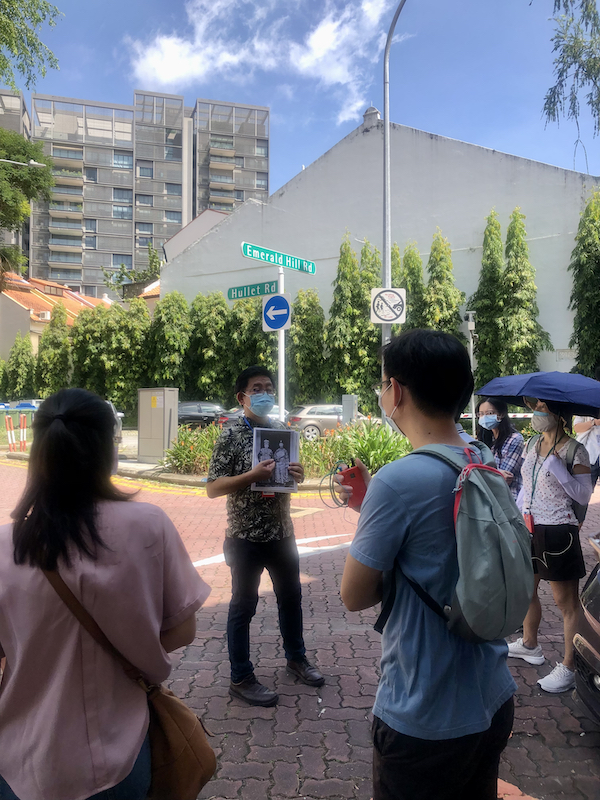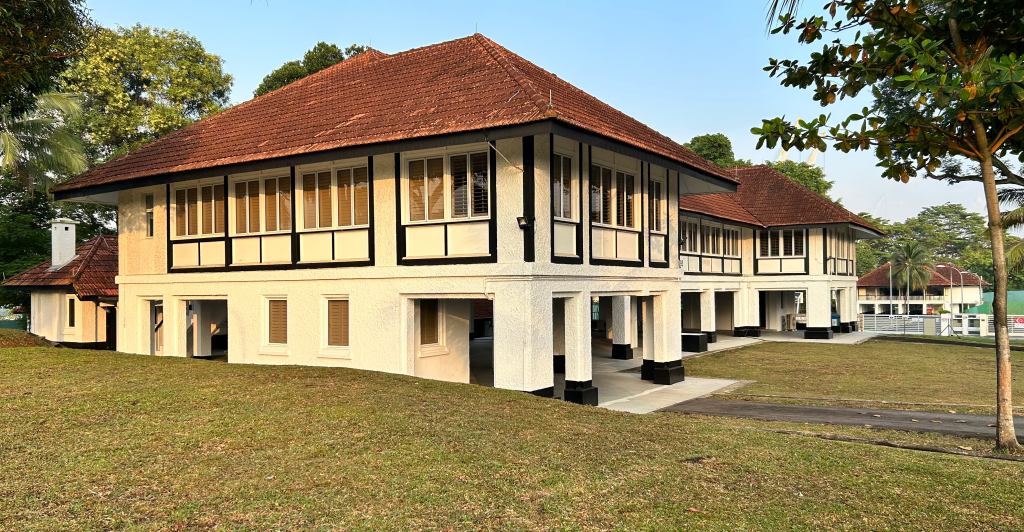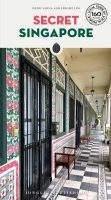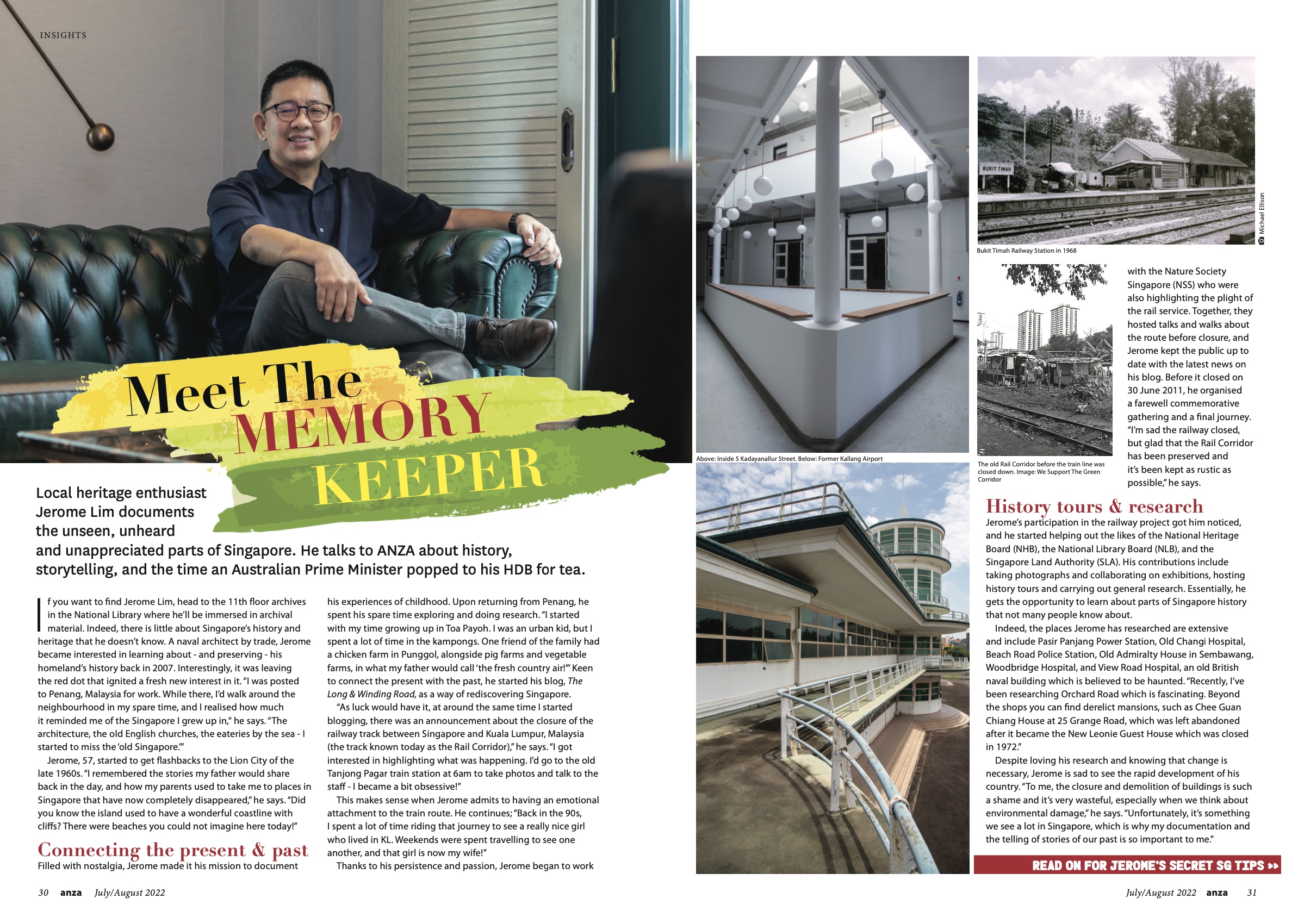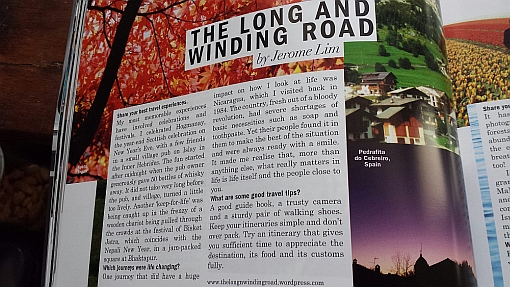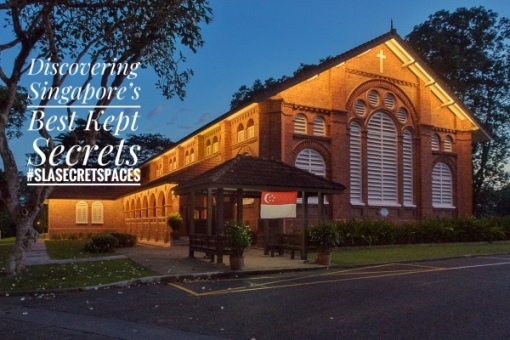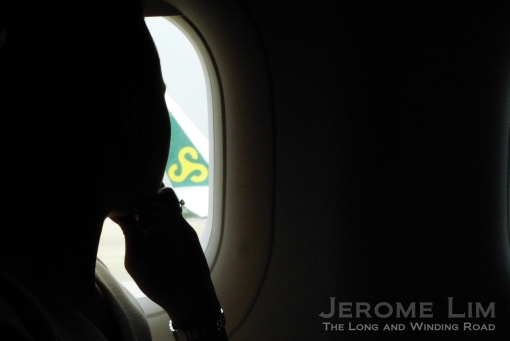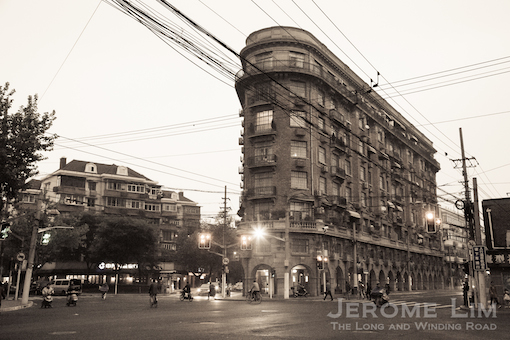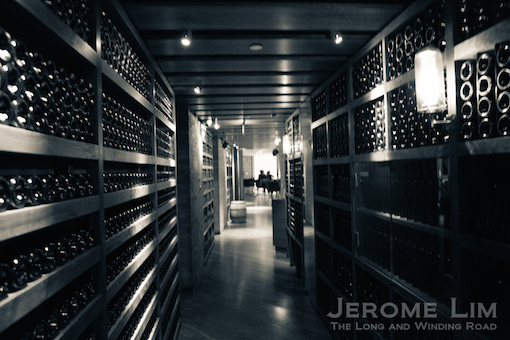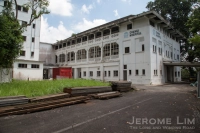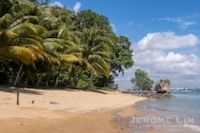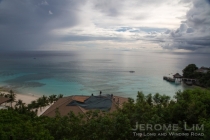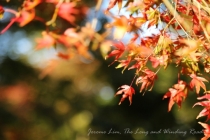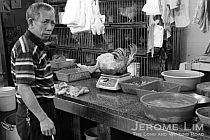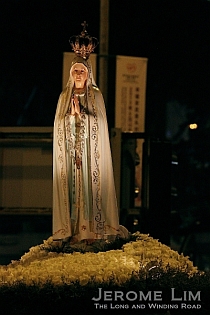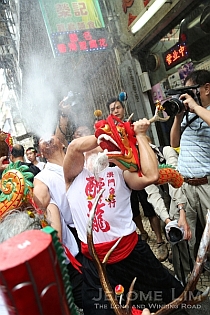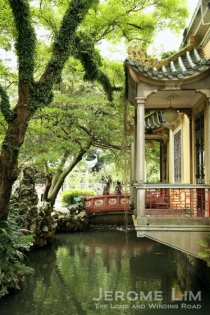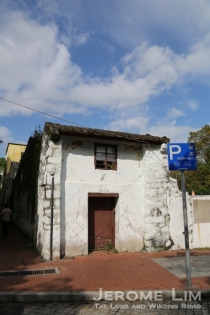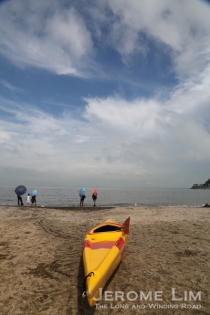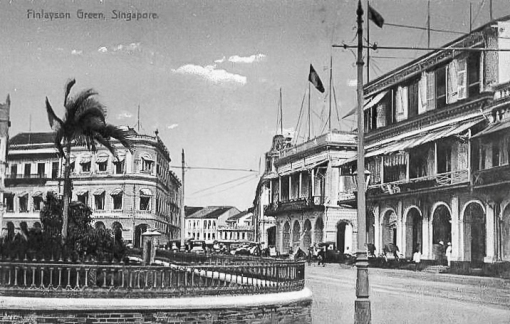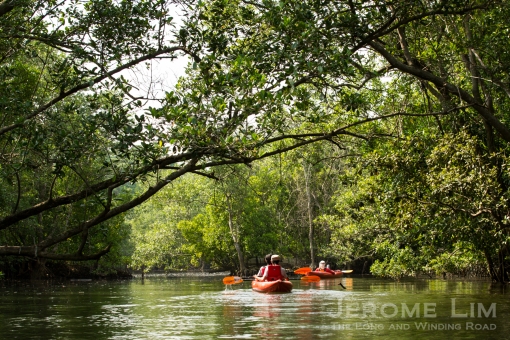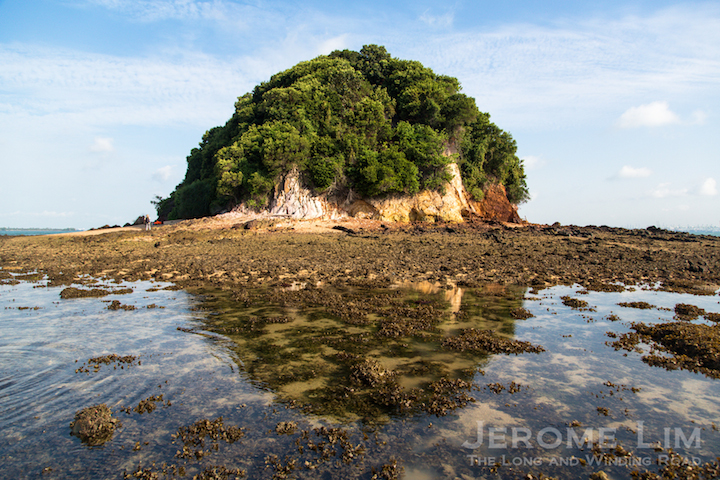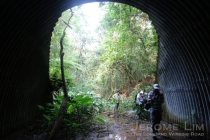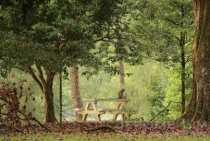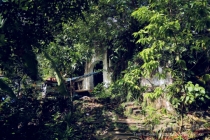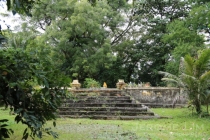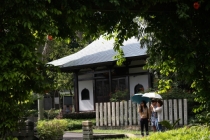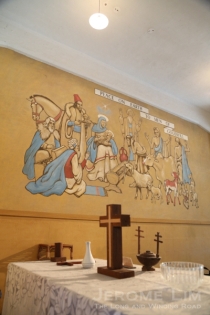As if to foretell the end in a cycle of time for the Ellison Building, and the beginning of another, the mayura, a peacock – a mythological representation of the cycle of time, has made an appearance just across Bukit Timah Road from it. In the peacock’s view is the side the building whose time is at it end; an end that is being brought about by the intended construction of the North-South Expressway right under it.

That a decision was taken to demolish a portion of a building that has been gazetted for conservation is hard to fathom. Protection through conservation, so it seems, counts for very little when the development of national infrastructure is a justification. Constraints of space due to what already exists underground has forced the authorities concerned to take this unfortunate decision. The section that will be demolished, which contains three units along Bukit Timah Road, will be reconstructed and reinstated to the building original design after the expressway is completed in 2026.
The decision caught the public unawares, first coming to light on 7 August 2016. The Chinese language daily Lianhe Zaobao, in an article on the construction of the expressway, made mention that part of the building’s “façade” was to be demolished and reinstated. Further information was then provided by a Straits Times 18 August 2016 report and much shock and disappointment has been expressed [see: Rebuilding parts of heritage building not the answer (Letter to the Straits Times, 18 August 2016), the Singapore Heritage Society’s 18 August 2016 Statement on Ellison Building, and ICOMOS Singapore’s 2 September Statement on the Proposed Demolition and Reconstruction of Part of Ellison Building].

The old style Hup Chiang kopitiam at the Ellison Building, now occupied by a Teochew porridge restaurant.
The news is also upsetting considering that the Ellison is one of the last survivors of the landmarks that once provided the area with its identity. Old Tekka Market, an focal point for many heading to the area in its day, has long since left us. Its replacement, housed at the bottom of a HDB built podium development built across the road from the old market, lacks the presence of the old – even if the complex towers over the area. The complex sits on the site of another missing landmark, the Kandang Kerbau Police Station. One still there but now well hidden from sight is the Rochor Canal. Flavoursome in more ways than one, the canal would often mentioned in the same breath as any reference that was made to the area. Looking a little worse for war and dwarfed by much of what now surrounds it, the Ellison building with its distinctive façade, still makes its presence felt.

The Ellison Building as interpreted by the Urban Sketchers Singapore.
The Ellison building is one of three structures found in the area on which the Star of David proudly displayed, the others being the David Elias building and the Maghain Aboth synagogue at Waterloo Street. Placed between the 19 and 24 on its Selegie Road façade that gives the year of its completion, it tells of a time we have forgotten when the area was the Mahallah to the sizeable Arab speaking Baghdadi Jewish community. Described as having a feel of old Baghdad, the Mahallah was where the likes of Jacob Ballas and Harry Elias, just two of the communities many illustrious children, spend their early years in. Another link to its origins is an “I. Ellison” one finds over the entrance to No. 237 – one of the units that will be demolished. This serves to remind us of Isaac Ellison who had the building erected, apparently, for his wife Flora.
The building seems also to have a long association with one of Singapore’s biggest obsessions, food. One food outlet that goes back as far as the building is Singapore’s oldest Indian Vegetarian restaurant, Ananda Bhavan (which still operates there). It was one of two vegetarian places that I remember seeing from my days passing the building on my daily rides home on the bus as a schoolboy. I would look out for the eye-catching displays of brightly coloured milk candy, neatly arranged on the shelves of wooden framed glass cabinets and also the restaurants’ old fashioned counters. Another sight that I never failed to notice was the mama shop along the five-foot-way and its stalk of bananas on display from which bananas would be plucked and purchased individually.

A lost reminder of the past, an old fashioned Indian Vegetarian restaurant that has since been replaced by a popular nasi lemak shop.
The units that housed the vegetarian restaurants are fortunately on the side along Selegie Road. This will not be affected by the expressway construction and is housed within a larger part of the building that is not being demolished. This is something that should perhaps be looked at positively as unlike the regretful loss of whole places and structures that we have become accustomed to – so that they can keep our world moving, the Ellison, because of it conservation status will not totally be lost.
Previous instance of moving our world too far and too fast, and in a direction not everyone is comfortable with, we have bid farewell to well loved structures such as the people’s National Theatre, the much-loved National Library, and what probably counts as Singapore’s first purpose built hawker centre – the Esplanade Food Centre.
We have also parted company in more recent times with places such as the remnants of the historic Mount Palmer and a part of the Singapore’s first polytechnic. Both were flattened earlier this year to allow the final phase of the Circle Line MRT to be completed. Another historic site, Bukit Brown cemetery, has also lost some of its inhabitants to a highway that is being built through it. There is also the case of the proposed Cross Island Line’s proposed alignment that will take it under what should rightfully be an untouchable part of Singapore – the Central Catchment Nature. Of concern is the site investigation work that will be carried out and its potential for long term damage to the flora and fauna of the nature reserve.
The regret of allowing places such as the National Library and National Theatre to pass into history is still felt. Whatever is intended for the Ellison is something we similarly will regret. Let us hope that the regret is not also one of setting a precedent in the resolution of conflicts to come between conservation and the need for development.
Other views of the Ellison Building over the years found online:

Part of the Selegie Road face of Ellison Building, possibly in the 1980s (snowstorm snowflake on Panoramio).
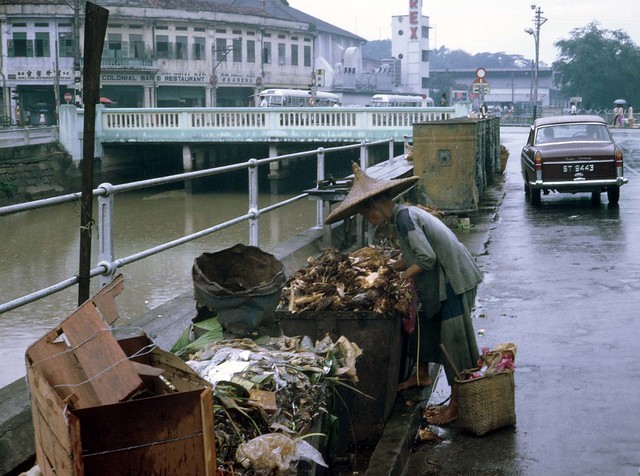
The Ellison Building, seen from across the then opened Rochor Canal in 1969 (Bill Strong on Flickr).





















































































